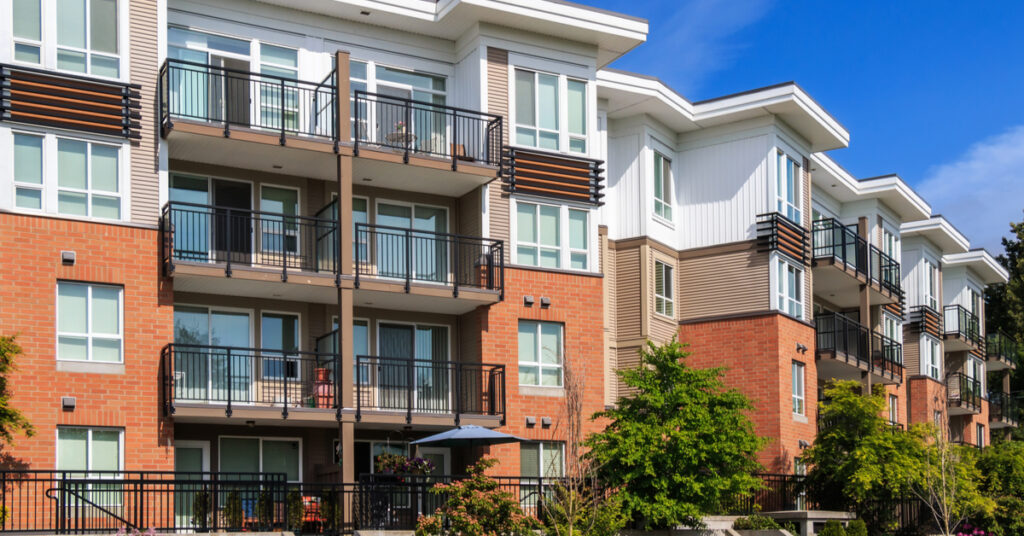Apartment rents stayed level at an average of $1,702 in February, following normal seasonal patterns and casting more eyes on the busier spring rental season, according to Yardi Matrix.
February’s flat rent growth from the month prior isn’t unusual; in the six years pre-pandemic, rents only grew by an average of $2 between the first two months of the year. But year over year, rents were down 4.8% nationwide in February, down by 70 basis points from January to fall to the lowest level of rent growth in almost two years.
Notably, a gulf is emerging between the rent performances of high-end, lifestyle-class properties and renter-by-necessity (RBN) units. On a monthly basis, average asking rents dropped 0.2% nationwide for lifestyle apartments, while they rose 0.2% for the RBN class. Moreover, in the top 30 rental metros tracked by Yardi, cities where the lifestyle property rents dropped (24 cities) outnumbered those where rents for such units rose (five) by nearly 5 to 1. Conversely, in the RBN segment, metros where rents rose (19) vastly outnumbered those where rents fell (7).
The discrepancy between the two property classes indicates that affordability is becoming a factor, skewing demand upward for renters locked into the renter pool while having less impact on discretionary renters.
Yardi’s figures also illustrate that metros are all over the map when it comes to where they are in the performance cycle. Many of the cities that saw outsized rent growth during the pandemic boom are now either negative or barely positive on an annual basis. Las Vegas and Phoenix, which saw rents decline by 1.6% and 1.2%, respectively, are now in the red year over year, while Austin (2.0%), Atlanta (2.2%) and Sacramento (2.3%) are close to crossing the line.
However, low-volatility metros in the Midwest like Indianapolis (which saw 9.0% rent growth annually in February) and Kansas City (7.9%) now lead Yardi’s top 30 in year-over-year performance. Apartments in the two cities have remained affordable and haven’t seen large additions of new inventory hold rent growth down.
The big question now is whether nationwide demand picks up further in the spring, and if so, by how much. Thus far, demand has come down from the banner levels of 2021, though absorption is still positive in most markets. But the Federal Reserve remains committed to its plan to reduce inflation, which means further deceleration in wage gains and tempering of the job market — shifts that will affect multifamily demand. Strong employment persists and consumer spending growth remains robust, but with other fundamentals uncertain at best, the fortunes of the apartment market will make for fascinating viewing in the months ahead.








